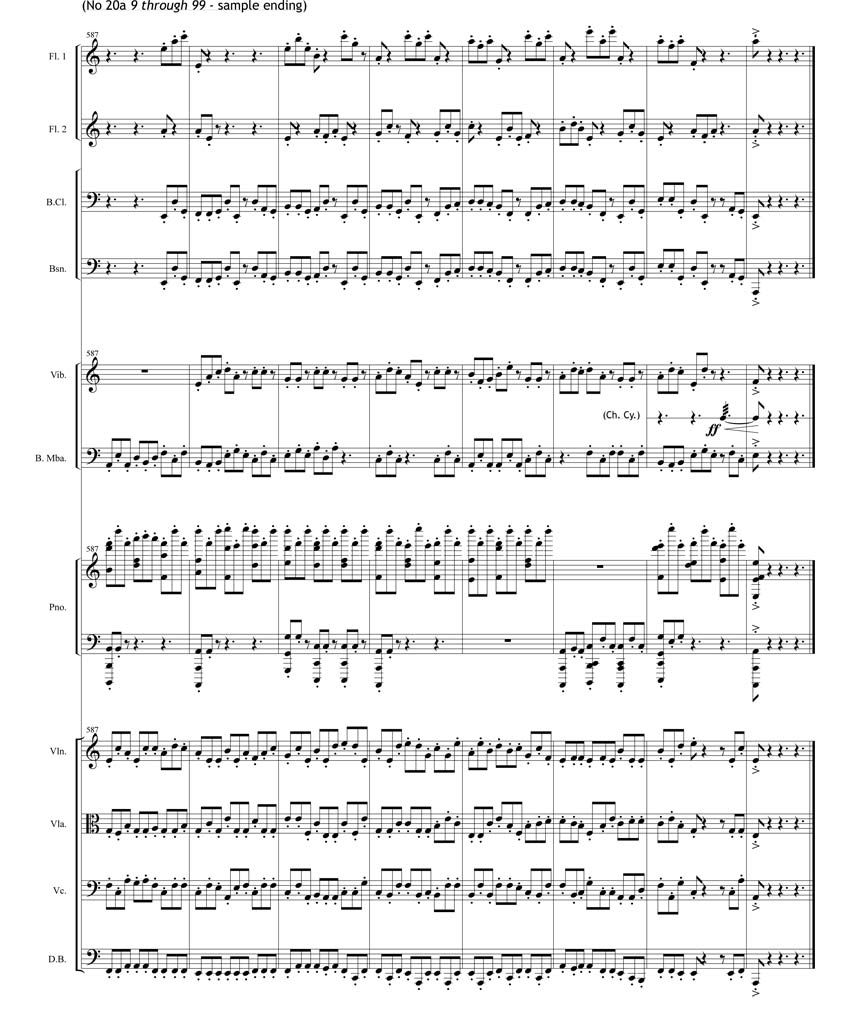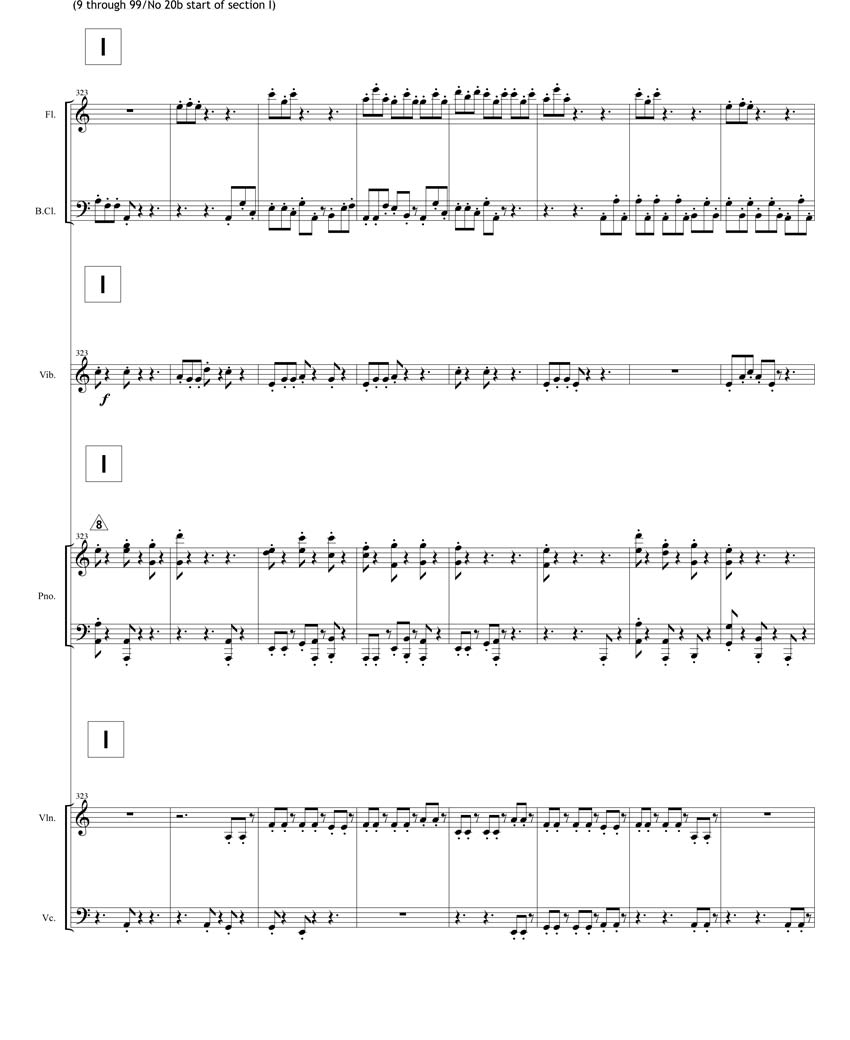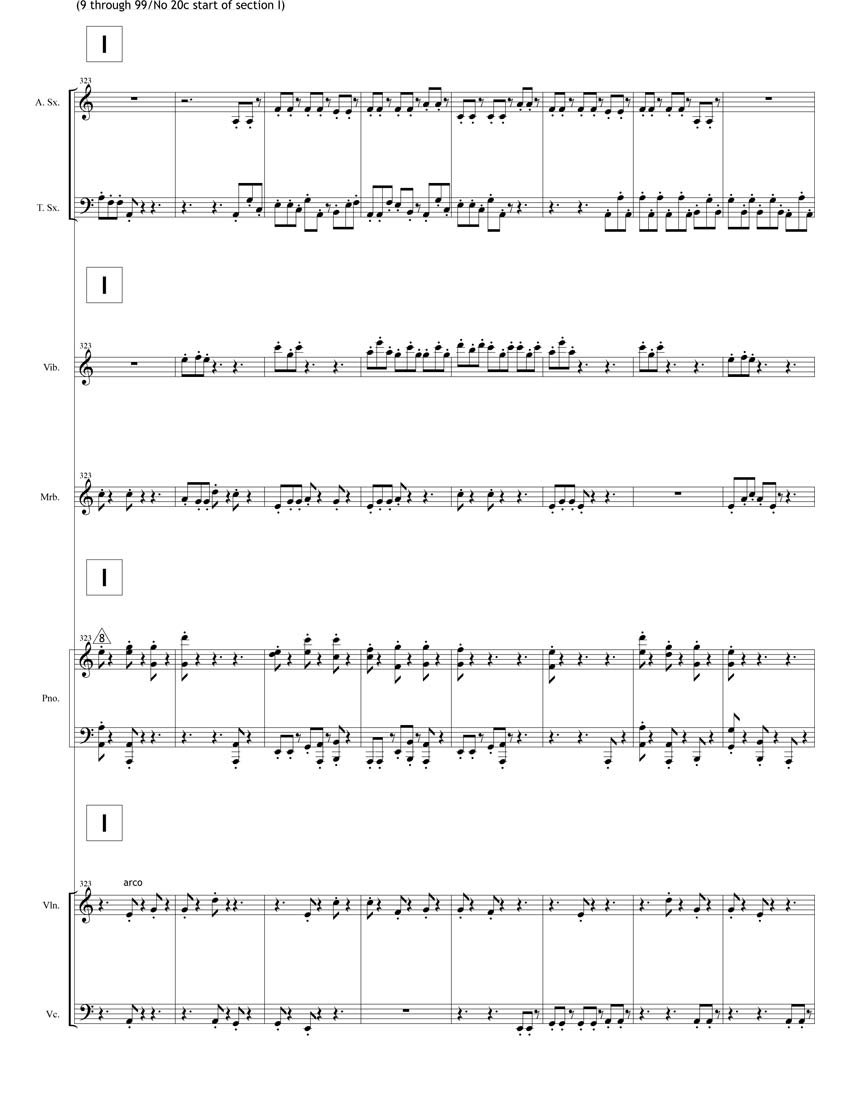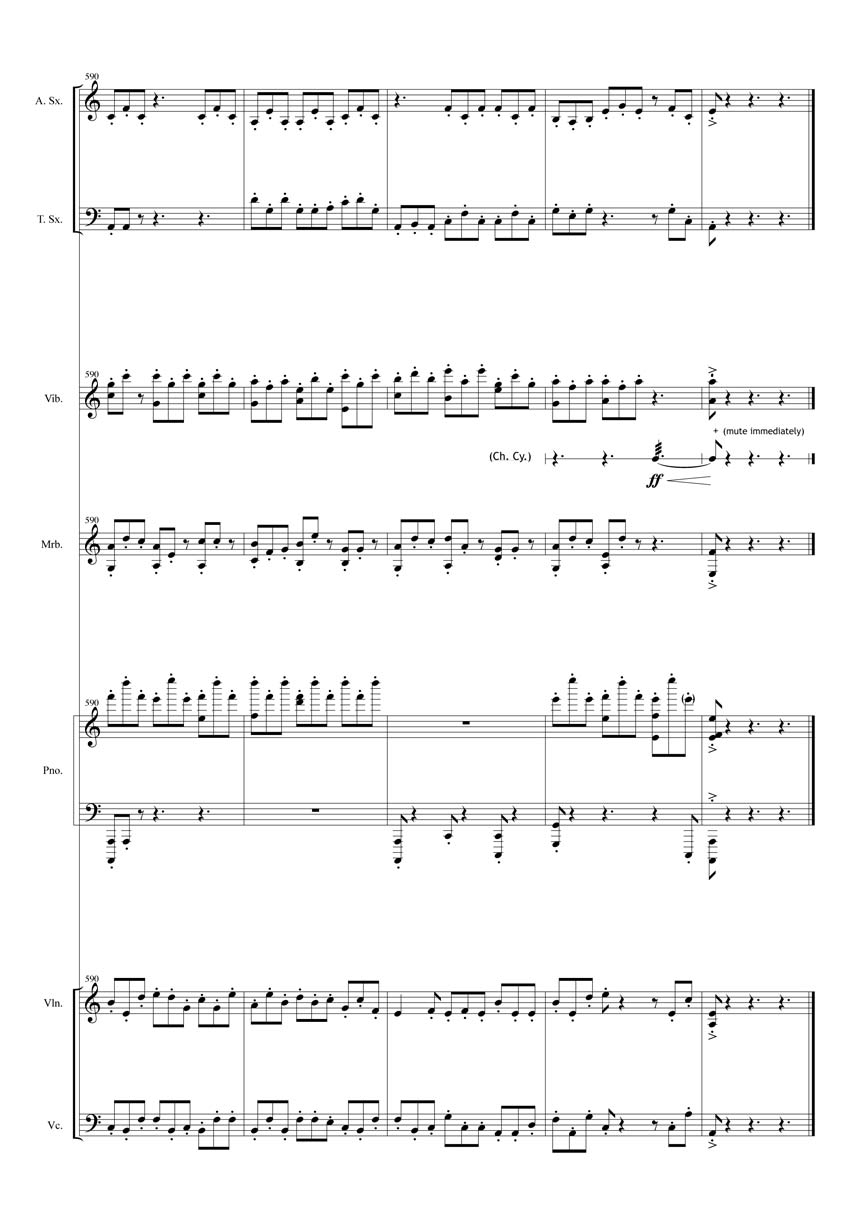No 20 9 through 99 (2003/2005)
For ensemble
Commissioned by: Ives Ensemble (20a), California EAR Unit (20b), ensemble KORE (20c) with financial support from the Netherlands Fund for the Creation of Music
First Performance:
20a: Ives Ensemble, 2003, De Rode Hoed, Amsterdam
20b: California EAR Unit, March 27 2006, Los Angeles County Museum of Art
20c: ensemble KORE, May 24 2006, La Sala Rossa, Montréal
Instrumentation:
20a: 2 flutes, bass clarinet, bassoon, violin, viola, cello, double bass, marimba, vibraphone, Chinese cymbal & piano four-hands
20b: flute, bass clarinet, violin, cello, vibraphone, Chinese cymbal & piano
20c: alto sax, tenor sax, violin, cello, marimba, vibraphone, Chinese Cymbal & piano
Duration: 12’
![]() Score samples 20a
Score samples 20a
![]() Score samples 20b
Score samples 20b
![]() Score samples 20c
Score samples 20c
Info/Program note:
In the course of 2003 I gradually found myself moving away from self-designed musical rules, to rules proposed by pre-existing mathematical or natural phenomena. One of the first pieces in this area was the work 9 through 99, written for a portrait concert by the Ives Ensemble in 2004. The work is an entirely faithful ‘translation’ of Pascal’s famous Triangle and aims at portraying some of the inherent beauties and intricacies of the triangle itself, with all of its’ many wonderful forms of self-similarity. The triangle is set canonically, Modulo 9 (thus entirely symmetrical) and gradually expands from one to ten triangles. The instruments enter in succession, with the piano leading off and being the only one to actually complete all 10 triangles. The other instruments enter at pivotal points and with different durations separating their phrases. Some catch up and some remain far behind by the time the piece ends. The original – and preferred – version of 9 through 99 was scored for 12 musicians (including piano four-hands, 4 winds and 4 string players) and included a high degree of hocketing between instruments, as well as an actual relay race for the four strings as they perform a foolhardy attempt to catch up with the others through omitting all possible rests from their musical figures. Subsequent versions of the piece were re-scored specifically for the available setups of the California EAR Unit and ensemble KORE and basically omit most of the hocketing, all of the canons and the four-part relay race. The order of the entries however remains the same and proved to work in those settings as well.
With entrances starting on either the first or fourth degree of the Phrygian scale on E, the score is characterized by a total absence of either expression marks or articulation markings… and not a single accidental.





